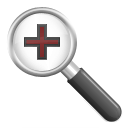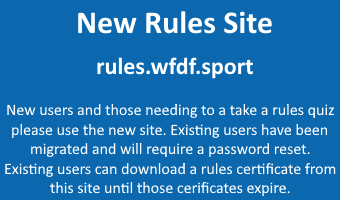- 17.1. Dangerous Play:
- 17.1.1. Actions demonstrating reckless disregard for the safety of fellow players, or posing significant risk of injury to fellow players, or other dangerously aggressive behaviours, are considered dangerous play and must be treated as a foul, regardless of whether or when contact occurs. This rule is not superseded by any other foul rule. If the dangerous play call is accepted, this must be treated as the most relevant foul from Section 17.

- 17.2. Receiving Fouls:

- 17.2.1. A Receiving Foul occurs when a player initiates non-minor contact with an opponent before, while, or directly after, either player makes a play on the disc.




- 17.2.1.1. Contact with an opponent’s arms or hands, that occurs after the disc has been caught, or after the opponent can no longer make a play on the disc, is not a sufficient basis for a foul, but should be avoided (excluding contact related to Section 17.1 and 17.3).
- 17.2.2. After an accepted receiving foul the fouled player gains possession at the location of the breach, even if that location is in an end zone, and play restarts with a check. If, after the check, 14.3 applies, the stall count can not be started until a pivot point is established at the nearest location on the goal line. If the foul is contested, the disc is returned to the thrower.

- 17.3. Strip Fouls:
- 17.3.1. A Strip Foul occurs when an opponent fouls a player and that causes the player to drop a disc they caught or to lose possession of the disc.



- 17.3.2. If the reception would have otherwise been a goal, and the foul is uncontested, a goal is awarded.

- 17.4. Blocking Fouls:
- 17.4.1. A Blocking Foul occurs when a player takes a position that an opponent moving in a legal manner will be unable to avoid, taking into account the opponents expected position based on their established speed and direction, and non-minor contact results. This is to be treated as either a receiving foul or an indirect foul, whichever is applicable.

- 17.5. Force-out Fouls:
- 17.5.1. A Force-out Foul occurs when a receiver is in the process of establishing possession of the disc, and is fouled by a defensive player before establishing possession, and the contact caused the receiver:



- 17.5.1.1. to become out-of-bounds instead of in-bounds; or
- 17.5.1.2. to catch the disc in the central zone instead of their attacking end zone.
- 17.5.2. If the receiver would have caught the disc in their attacking end zone, it is a goal;
- 17.5.3. If the force-out foul is contested, the disc is returned to the thrower if the receiver became out-of-bounds, otherwise the disc stays with the receiver.
- 17.6. Defensive Throwing (Marking) Fouls:

- 17.6.1. A Defensive Throwing Foul occurs when:
- 17.6.1.1. A defensive player is illegally positioned (Section 18.1), and there is non-minor contact between the illegally positioned defensive player and the thrower; or

- 17.6.1.2. A defensive player initiates non-minor contact with the thrower, or there is non-minor contact resulting from the thrower and the defender both vying for the same unoccupied position, prior to the release.
- 17.6.1.3. If a Defensive Throwing Foul occurs prior to the thrower releasing the disc and not during the throwing motion, the thrower may choose to call a contact infraction, by calling “Contact”. After a contact infraction that is not contested, play does not stop and the marker must resume the stall count at one (1).


- 17.7. Offensive Throwing (Thrower) Fouls:

- 17.7.1. An Offensive Throwing Foul occurs when the thrower is solely responsible for initiating non-minor contact with a defensive player who is in a legal position.

- 17.7.2. Contact occurring during the thrower's follow through is not a sufficient basis for a foul, but should be avoided.
- 17.8. Indirect Fouls:
- 17.8.1. An Indirect Foul occurs when there is non-minor contact between a receiver and a defensive player that does not directly affect an attempt to make a play on the disc.

- 17.8.2. If the foul is accepted the fouled player may make up any positional disadvantage caused by the foul.
- 17.9. Offsetting Fouls:
- 17.9.1. If accepted fouls are called by offensive and defensive players on the same play, these are offsetting fouls, and the disc must be returned to the last non-disputed thrower.
- 17.9.2. If there is non-minor contact that is caused by two or more opposing players moving towards a single point simultaneously, this must be treated as offsetting fouls.

- 17.9.2.1. However if this occurs after the disc has been caught, or after the relevant player/s involved can no longer make a play on the disc, this must be treated as an Indirect Foul (excluding contact related to Section 17.1).


























